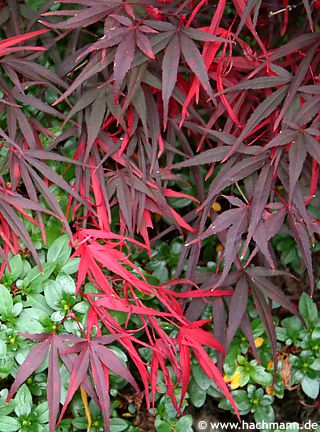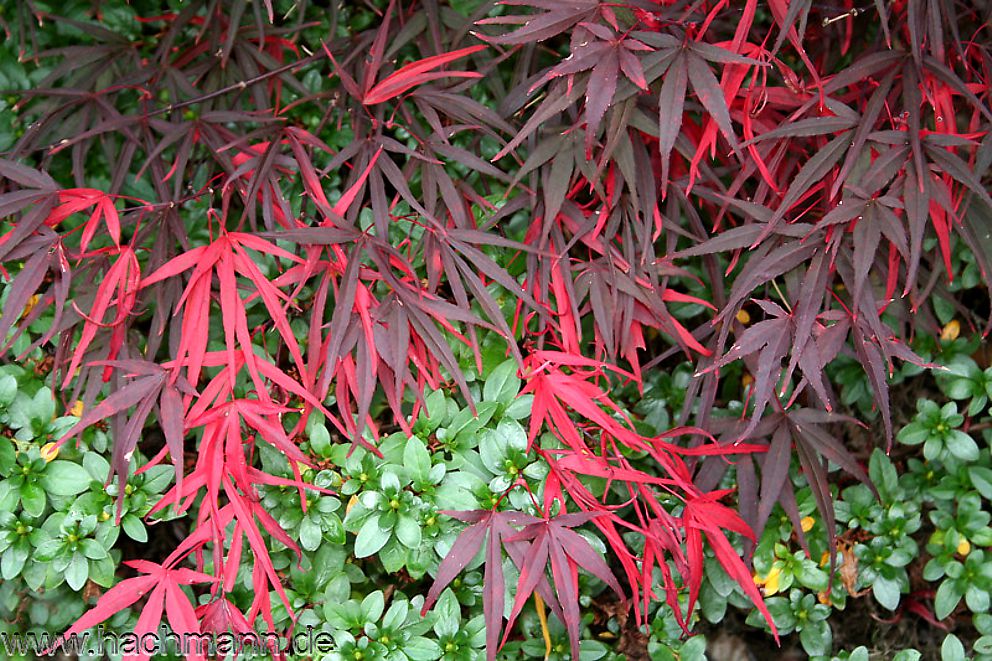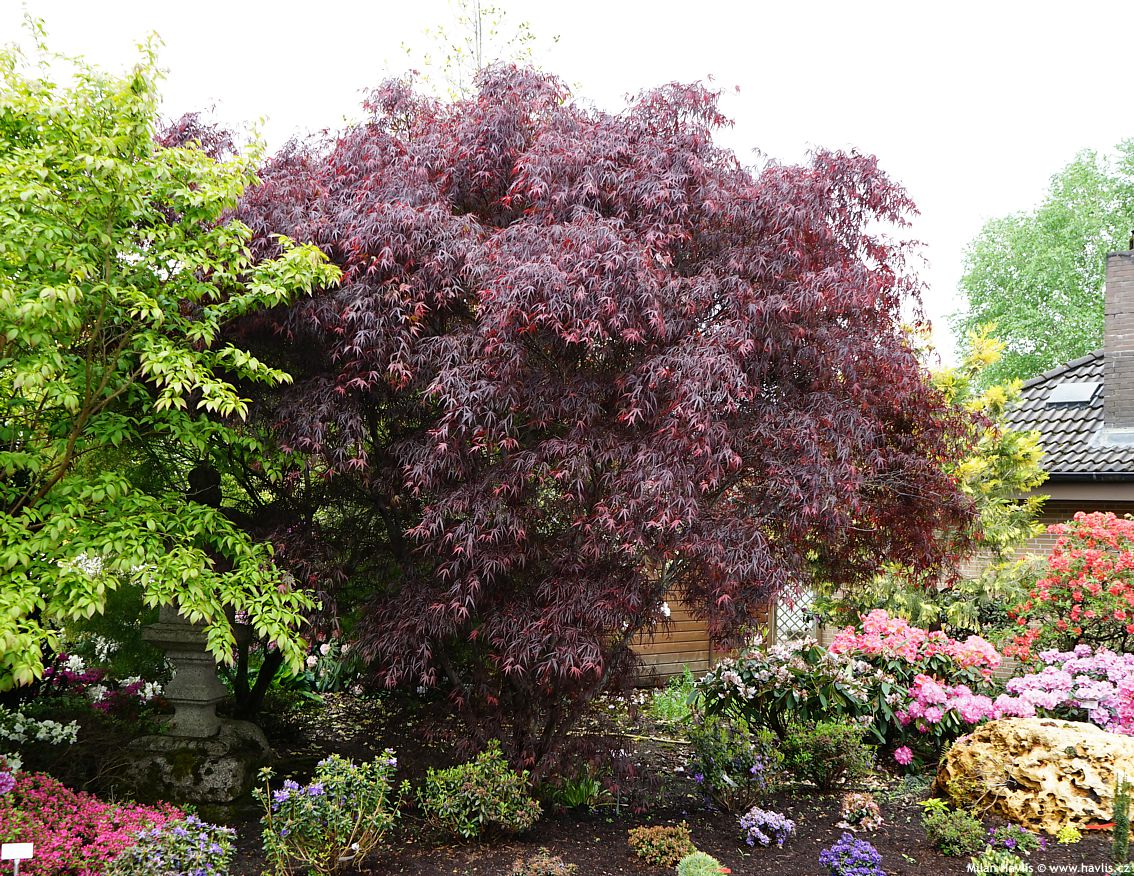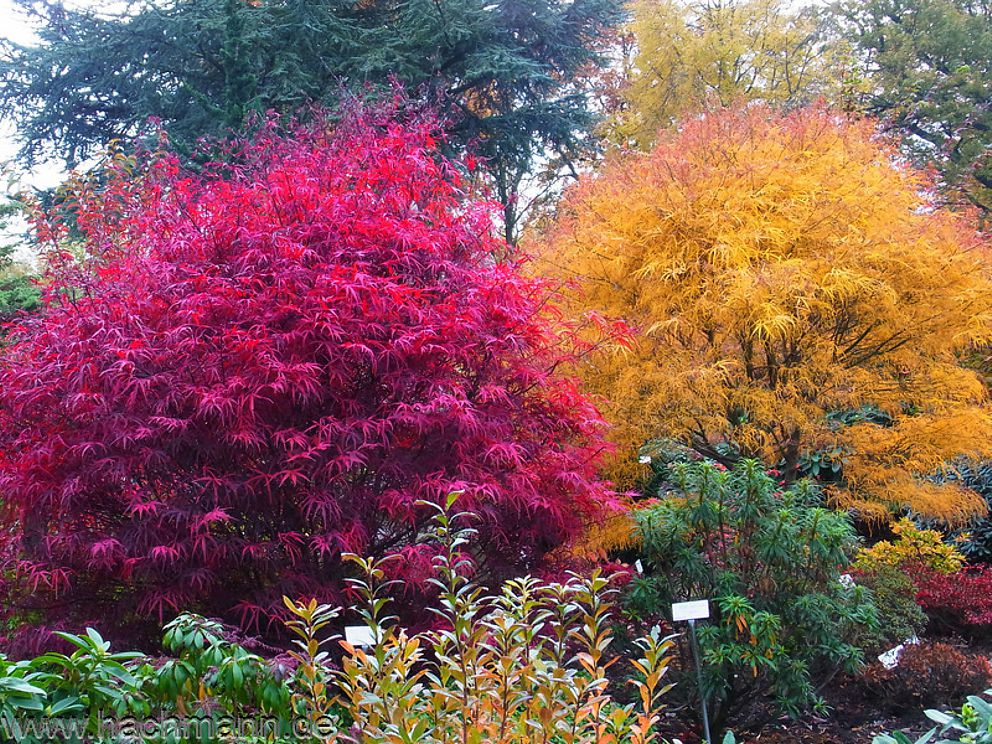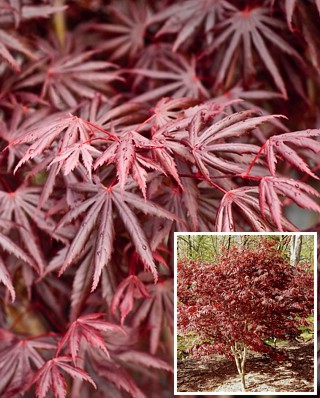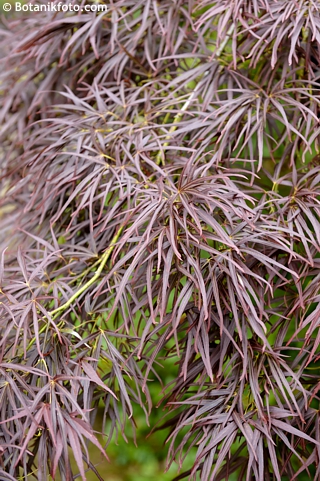Acer palmatum 'PUNG KIL' Japanese maple
size/type
small tree,taller shrub
usual height
3-4m
usual width
2-3,5m
leaves
deciduous broadleaf
colour of leaves
location
full to partial sun
soil type
acidic (peaty)
soil moisture requirements
evenly moist but well-drained
USDA zone (lowest)
5 (down to -29°C)
winter protection
for zone 5+6

for zone 7

categorized
Acer
Japanese maples are very decorative and usually low shrubs, occasionally small trees, with attractive foliage and picturesque structure. There are many varieties in various shades of green, chartreuse, golden and yellow, red to maroon, and even multicoloured (variegated). They originate from Asia (Japan, China, Korea), where they have been cultivated for at least two centuries or perhaps even longer, however, they were introduced to Europe only at the beginning of the 19th century, specifically to Great Britain in 1820. Interestingly, the botanist Carl Peter Thunberg described them much earlier, in 1784, because he undertook an expedition to Japan in 1775-1776, discovering new species and collecting seeds and plants. He named the tree Acer palmatum, referring to the leaf shape resembling a human hand with fingers, although it is said that they first reminded him of frog fingers, which is also one of its oldest Japanese names: kaede. The other is momiji (baby hands). The beauty of the colours and shapes of the leaves and trees is reflected in many arts, for example, in the oldest preserved collection of Japanese poetry from the 8th century, the Man'yōshū (Collection of Ten Thousand Leaves). The Chinese poet Wang Wei (699-759) celebrated their beauty in many of his works, and naturally, maples often appeared in ancient paintings, tapestries, porcelain, and wherever classic and traditional decorations associated with the symbolism of these maples were desired: beauty and elegance, serenity, endurance, vitality, and transformation.Description of the plant:
Pung Kil is a Japanese maple variety of Korean origin. It is renowned for extremely slender lobes on palmately divided leaves, yet not dissected (cut-leaf). They are bright red as they emerge, mature to deep maroon, and turn brilliant carmine red shades in autumn. Dark maroon stems provide winter interest.Young plants exhibit an upright habit with even, dense branching. After about ten years the grow rate slows down and lateral branches spread sideways changing the habit to almost dome-shaped and elegantly arching, very dense, and regular.
Japanese maples need constantly moist soil that has to be well-drained, acidic to neutral, and medium fertile. Keep it mulched all year round. It loves a location with high air humidity, e.g., at a riverbank or near a pond but it is not a must. They can be pruned anytime during frost-free periods of winter but usually look best left to their own devices. Pung Kil maple demands full sun in constantly moist soil for the best leaf colour, but can grow in partial shade, too, where its red shades will be less pronounced and will partially change to dark green with maroon hues. Full shade is not recommended. It is hardy to at least -29 °C (USDA zone 5), and is suitable for large outdoor planters, too, if kept moist but without a saucer.
Last update 04-01-2023
QUICK PRICE OVERVIEW
CURRENTLY SOLD OUT
WANT TO TRY A SIMILAR PLANT?












